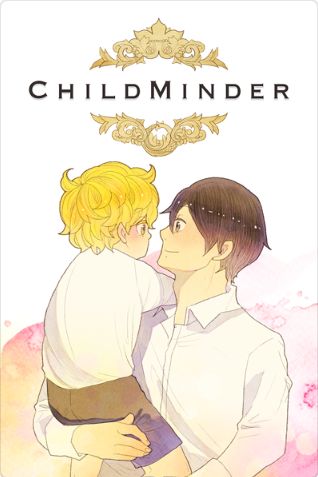Summary

The Color of Grace
by Linda Kage
When my mother remarried after thirteen years of being a widow, I had to move to a new town and enroll in a new school. Suddenly thrust into an entirely different kind of life, I just wanted to go home. I didn’t want to meet new people, didn’t want to leave my old friends, didn’t want to become a third wheel to my mom and her husband….and I really didn’t want to see Ryder Yates again. Ugh, I still don’t know why I turned down that too-good-to-be-true boy who flirted with me when we were attending separate schools.
But honestly, it wasn’t as bad as I thought it would be. It was worse.
Who knew becoming lost in a new life could help a girl find her true colors?
.
Read
The Color of Grace on http://kissnovel.net
Martial Peak Reviews
The Color of Grace by Linda Kage is a poignant exploration of adolescence, identity, and the complexities of familial relationships. The story centers around a young girl who is uprooted from her familiar surroundings when her mother remarries after years of widowhood. This transition thrusts her into a new town and a new school, where she grapples with feelings of isolation, resentment, and the daunting task of forging a new identity amidst the chaos of change.
The protagonist's journey is relatable and deeply resonant, particularly for readers who have experienced similar upheavals in their own lives. Kage masterfully captures the emotional turmoil of a teenager who feels like a fish out of water. The protagonist's reluctance to embrace her new life is palpable, and her internal conflict is portrayed with authenticity. The narrative opens with her reluctance to meet new people, her desire to cling to the past, and her disdain for the idea of becoming a third wheel to her mother and her new husband. This initial resistance sets the stage for a compelling character arc that unfolds throughout the novel.
One of the most striking aspects of Kage's writing is her ability to create multidimensional characters. The protagonist's interactions with her mother, her new stepfather, and her peers are rich with nuance. The relationship with her mother, in particular, is fraught with tension as the protagonist grapples with feelings of abandonment and jealousy. Kage does not shy away from depicting the complexities of this mother-daughter dynamic, which adds depth to the narrative. The protagonist's journey toward understanding and acceptance of her mother's choices is a central theme that resonates with readers who have navigated similar familial challenges.
Ryder Yates, the boy from her past who re-enters her life, serves as a catalyst for the protagonist's growth. Their relationship is fraught with misunderstandings and missed opportunities, which adds an intriguing layer to the story. Kage skillfully weaves in themes of regret and second chances, as the protagonist reflects on her past decisions and the impact they have on her present. Ryder's character is not merely a romantic interest; he represents the possibility of connection and understanding in a world that feels overwhelmingly alien to the protagonist. Their evolving relationship is a testament to the idea that sometimes, the people we least expect can help us find our way.
The theme of self-discovery is woven throughout the narrative, as the protagonist learns to navigate her new environment and confront her fears. Kage's portrayal of the protagonist's journey is both realistic and inspiring. As she begins to forge new friendships and embrace her new life, readers witness her transformation from a reluctant participant to an empowered individual. This evolution is beautifully illustrated through her experiences at school, where she gradually finds her voice and learns to assert herself in a world that initially felt hostile.
Another noteworthy aspect of The Color of Grace is Kage's exploration of the concept of "finding one's true colors." The protagonist's journey is not just about adapting to a new environment; it is about discovering who she is beneath the layers of fear and uncertainty. Kage uses vivid imagery and metaphor to convey this theme, allowing readers to connect with the protagonist's emotional landscape. The idea that becoming lost in a new life can lead to self-discovery is a powerful message that resonates long after the final page is turned.
In terms of pacing, Kage strikes a balance between introspection and action. The narrative flows smoothly, with moments of tension and conflict interspersed with quieter, reflective passages. This rhythm keeps readers engaged while allowing them to fully immerse themselves in the protagonist's emotional journey. Kage's writing is accessible yet evocative, making it suitable for a wide range of readers, from young adults to those who appreciate coming-of-age stories.
When comparing The Color of Grace to other young adult novels, it stands out for its emphasis on emotional authenticity and character development. While many stories in this genre focus heavily on romance or external conflicts, Kage's novel delves deep into the protagonist's internal struggles. Readers who enjoyed books like The Perks of Being a Wallflower by Stephen Chbosky or Looking for Alaska by John Green will likely find Kage's work equally compelling. Both authors share a knack for capturing the complexities of adolescence and the journey toward self-acceptance.
Overall, The Color of Grace is a beautifully crafted novel that resonates with anyone who has faced the challenges of change and the quest for identity. Linda Kage's ability to create relatable characters and explore profound themes makes this book a worthwhile read. It is a reminder that even in the midst of upheaval, there is the potential for growth, connection, and ultimately, the discovery of one's true self. This novel is not just a story about a girl navigating a new life; it is a celebration of resilience and the transformative power of embracing change.
























Reviews 0
Post a Reviews: